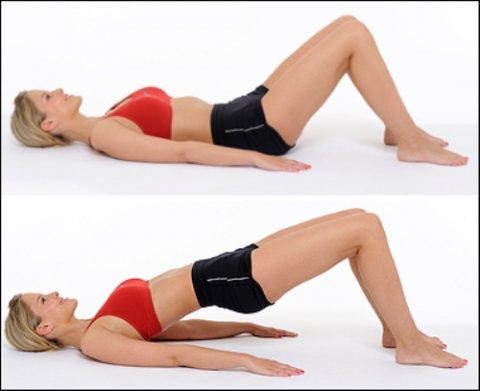Body-weight exercises use motions that develop muscle strength and keep you safe from the many chronic injuries, like joint problems, that come over time with weightlifting and other unnatural exercises which have little functional value in our daily lives.
For an exercise or workout to be functional, it must resemble the event being trained for as closely as possible. Keeping this in mind, the performance demands of the average person consists mainly of manipulating their own bodyweight throughout daily tasks, therefore the most functional way to develop strength in day-to-day activities is logically, bodyweight movements.
I believe that in today's society, gyms, training systems, and fad diets are mostly the result of excellent marketing rather then a genuine attempt to help a generally out of shape society.
Aside from running and swimming, most people have not been raised to use their bodyweight alone to exercise. My personal opinion is that popular fitness culture, for far too long, has not realised the numerous benefits bodyweight exercises have to offer. The exploding popularity of yoga and pilates are a wonderful example of the worth of bodyweight exercises.
Benefits of Bodyweight Exercises
* Bodyweight exercises require something you are never without: Your Body
* This style of exercise can be done anywhere, anytime, and without costly gym equipment
* Bodyweight exercises increase strength, power, and muscular endurance
* With bodyweight exercises you will develop balance, coordination, and flexibility
* Bodyweight exercises incorporate multiple muscle groups to develop overall strength
* It is necessary to activate and stabilise your core muscles when performing bodyweight exercises
There is a common myth that surrounds bodyweight exercise routines; Bodyweight exercises don't allow you to adjust the difficulty of an exercise.
Last week I was having a discussion with a fellow trainer about different training methods. When we discussed bodyweight exercises as a form of strength develop it was obvious that we were polar opposite in our beliefs. My belief is that it is pointless and illogical to add extra weight to a person if they are unable to complete an exercise or movement using their own bodyweight. My peer was adament that bodyweight exercise options are very limited and not enough to develop strength. My peer's retort was consistent with the misconception of bodyweight exercises throughout the fitness industry.
As an advocate of bodyweight exercises for strength development programs, I like to encourage my peers to incorporate more bodyweight exercises and training methods into their sessions. I often find myself telling clients and peers that the only limiting factor with bodyweight exercises is the individual's creativity.
Here are four simple ways of changing the difficulty of an exercise without adding weights:
1) Increase or decrease the amount of leverage
2) Perform an exercise on an unstable platform
3) Use pauses or pulses at the beginning, end, and middle of movement
4) Turn the exercise into a single limb movement
For example, consider a push up, a standard exercise that works your chest, shoulders, triceps, abdominals, obliques and lower back.
If you do push ups against a wall, the exercise is pretty easy.
 |
| Option 1 - Wall push up |
 |
| Option 2 - Push up on a elevated surface |
 | |
| Option 3 - The classic push up (Ladies perform on knees to reduce pressure on PFM) |
 | |
| Option 4 - Push ups with feet on an elevated surface |
To further increase the level of difficulty for an exercise you could place your hands on one or two balls. By introducing the balls into the exercise you are using an unstable surface. If this is still not difficult enough, incorporate pauses or pulses within the movement.
 |
| Option 5 - Push ups on an unstable surface |
 |
| Option 6 - One-handed push ups |
Please let me know your thoughts and/or experiences with bodyweight exercises in the comments section below.
Do you think bodyweight exercises are useful training method?
















































